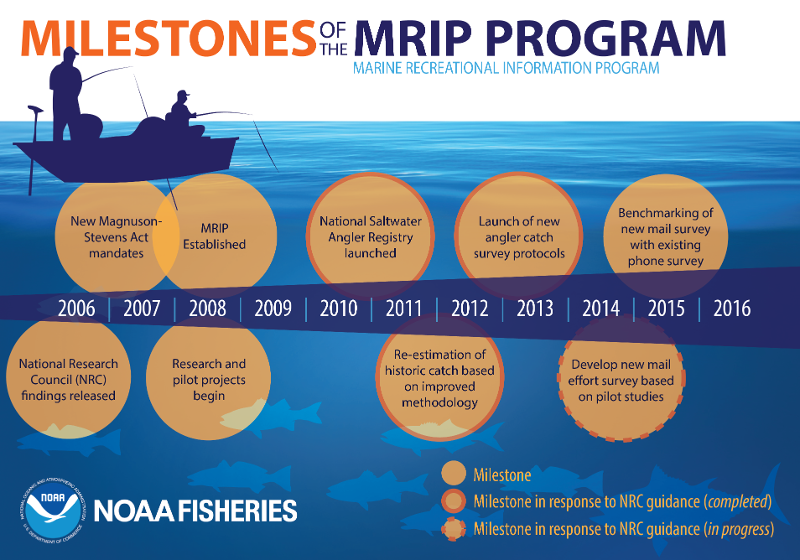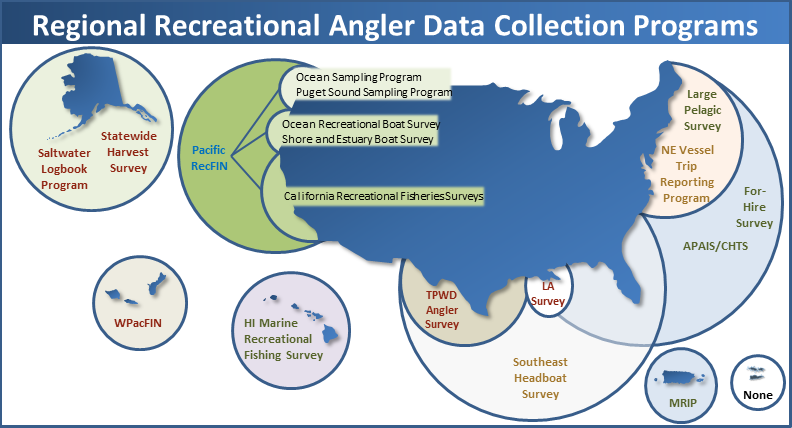Program Evolution
The Magnuson Fishery Conservation and Management Act of 1976 (MFCMA - Public Law 94-265) mandated a national program for management of fishery resources in the Exclusive Economic Zone (EEZ), which ranges from 3 to 200 miles from shore. The MFCMA also requires that fishery management plans for the EEZ consider harvest data for both recreational and commercial fisheries. The Marine Recreational Fishery Statistics Survey (MRFSS) was established as a national program in 1979 to provide a reliable database for estimating the impact of marine recreational fishing on marine resources. In 2008, MRFSS was formally replaced with the improved Marine Recreational Information Program (MRIP).
The MRFSS data collection methodology consisted of two independent, but complementary, surveys: a telephone survey of households and an intercept survey of anglers at fishing access sites. Methodological studies conducted in the 1970's showed that a telephone survey could be used to collect reliable data on recreational fishing activity, including number of trips taken, type of access (shore, boat), and dates of the trips, if the recall period was no longer than 2 months.
Information about the fish caught on these fishing trips, such as the species of fish, and the number and size of the fish caught were obtained from anglers intercepted and interviewed at fishing access sites. The data from the two independent surveys were combined to produce estimates of total recreational fishing effort, catch and participation.
The program of surveys has been conducted annually by NOAA Fisheries since then, with survey changes intended to improve the quality and coverage of the surveys over the years. This timeline will describe the major changes to the surveys designs and coverage. Additionally, the timeline lists other major milestones and events in collecting recreational fishing data.





